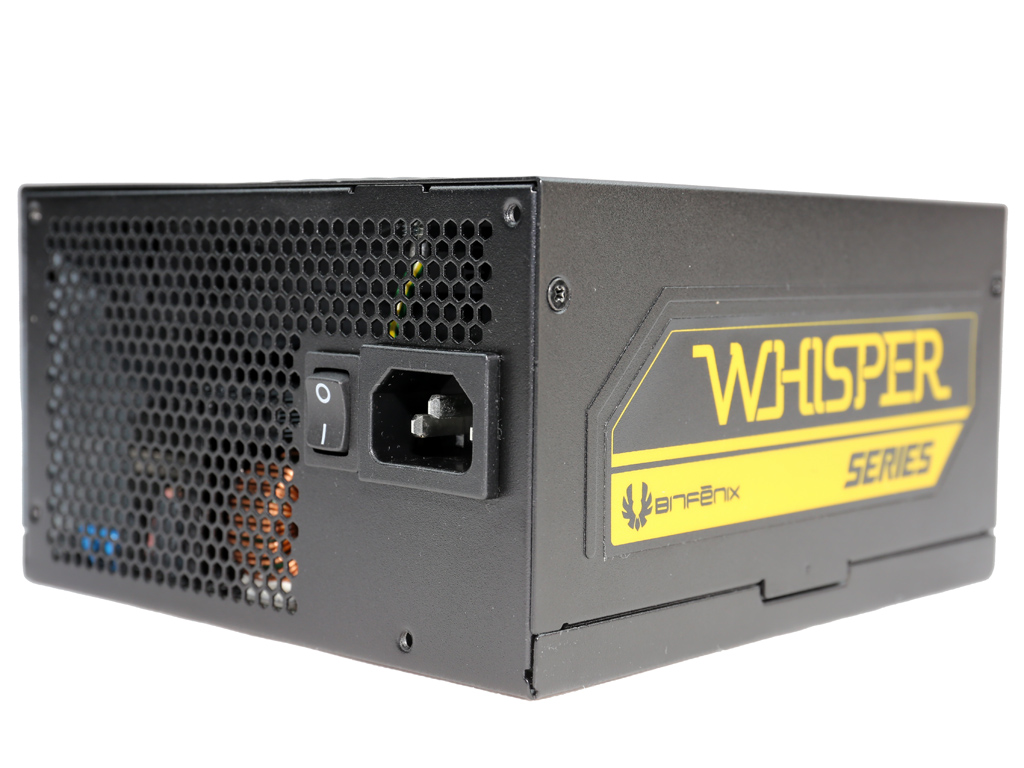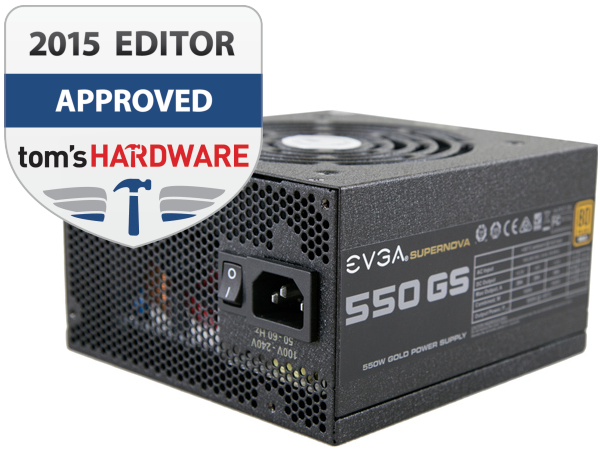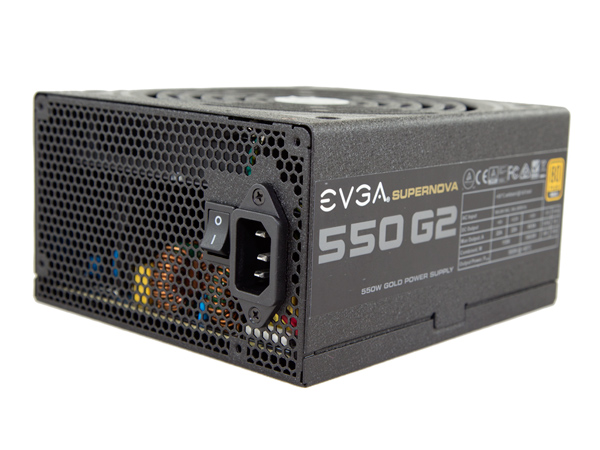Bitfenix Whisper Series 550W PSU Review
Bitfenix recently released its Whisper PSU family, which, as it name implies, promises quiet operation. This review focuses on the 550W model, offering 80 PLUS Gold efficiency and fully modular cabling.
Why you can trust Tom's Hardware
Load Regulation, Hold-Up Time, And Inrush Current
To learn more about our PSU tests and methodology, please check out How We Test Power Supply Units.
Primary Rails And 5VSB Load Regulation
Load Regulation testing is detailed here.
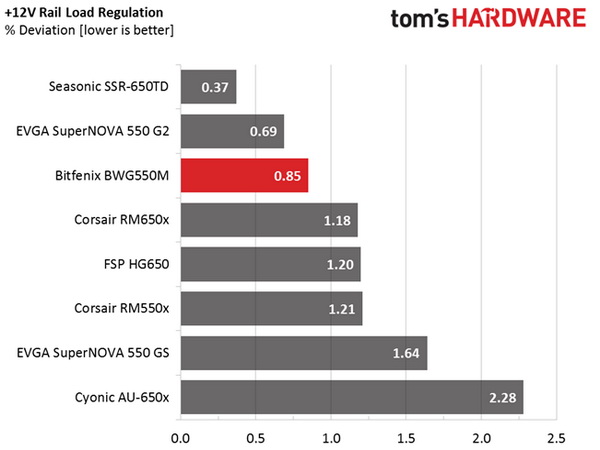
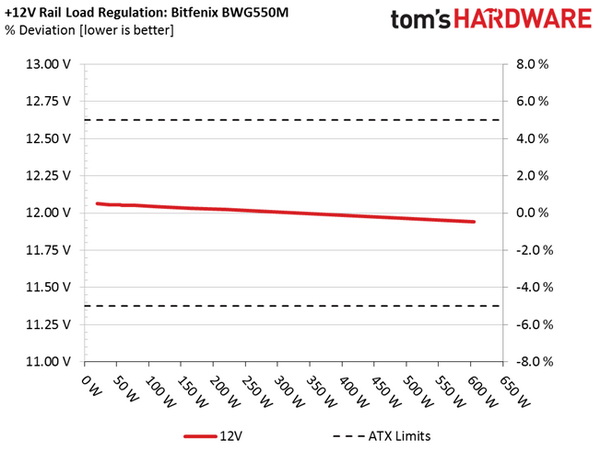
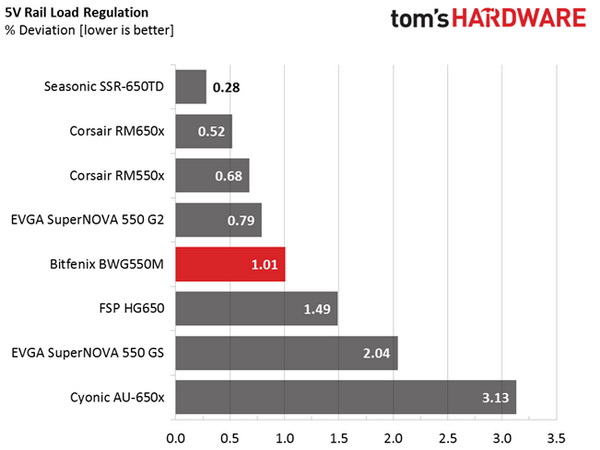
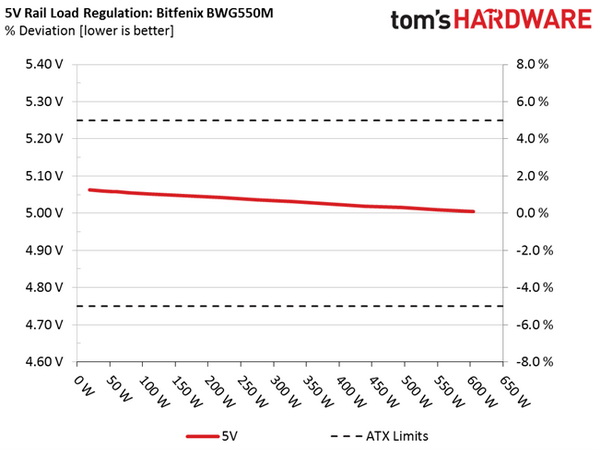
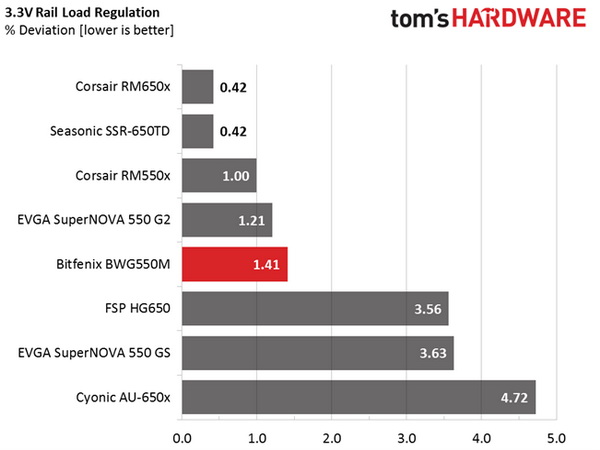
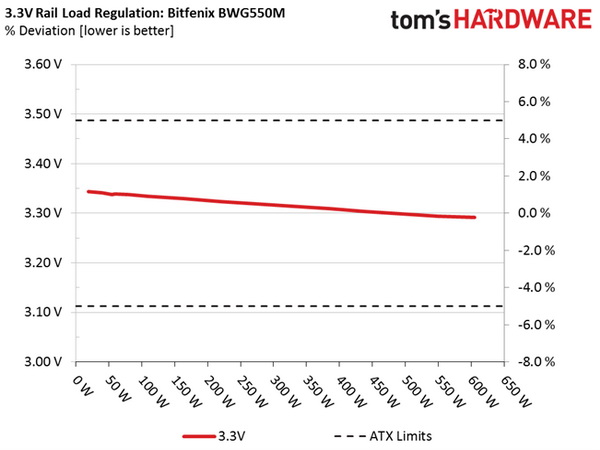
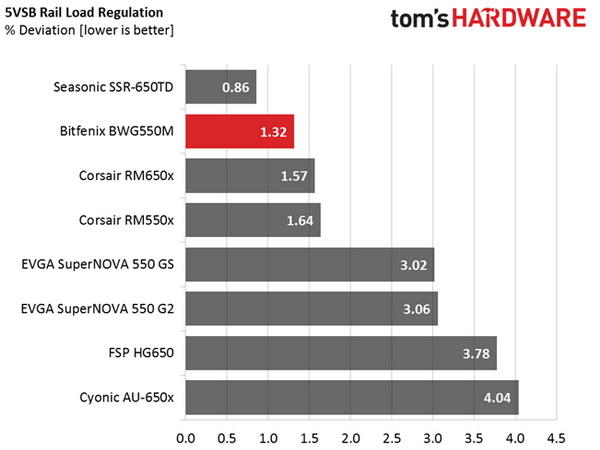
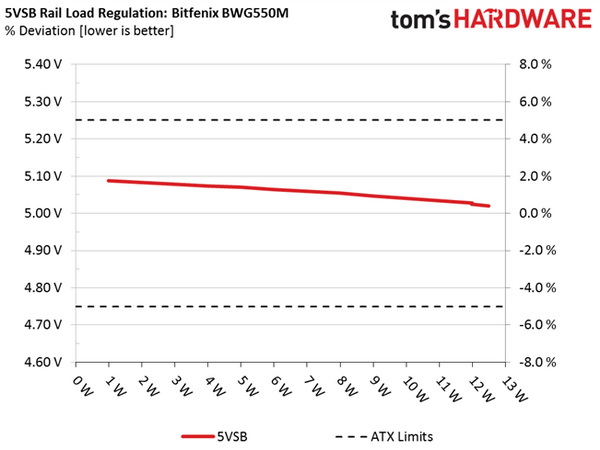
Hold-Up Time
Our hold-up time tests are described in detail here.
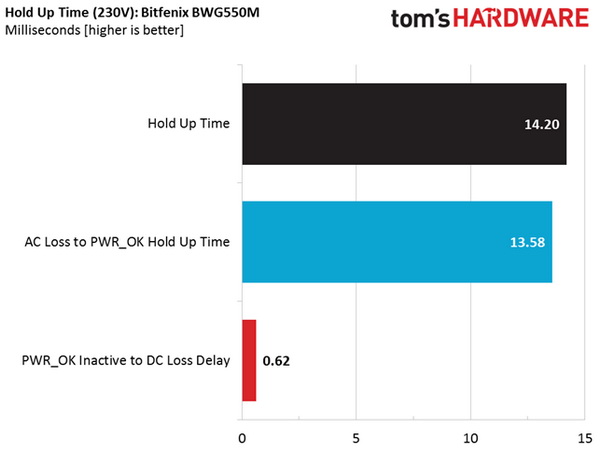
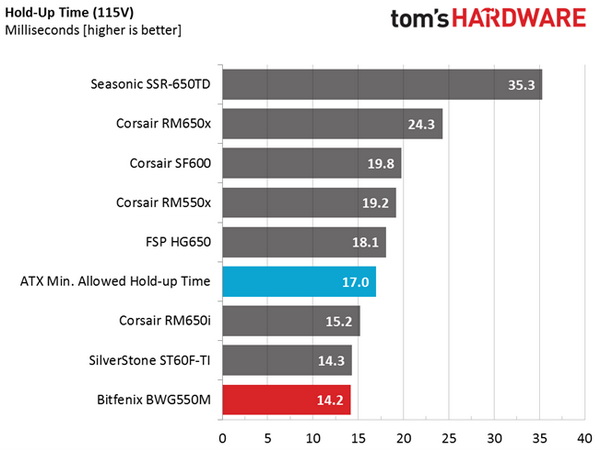
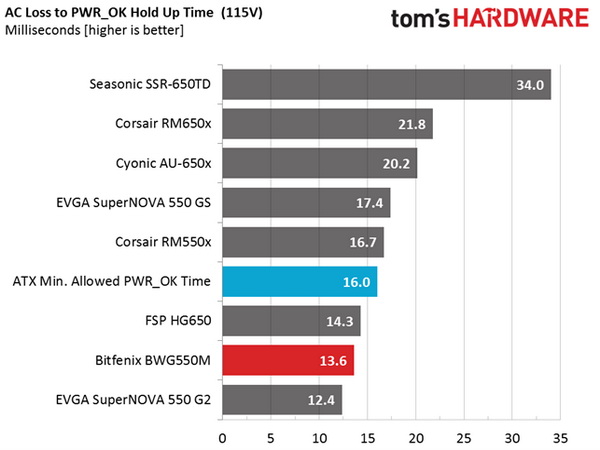
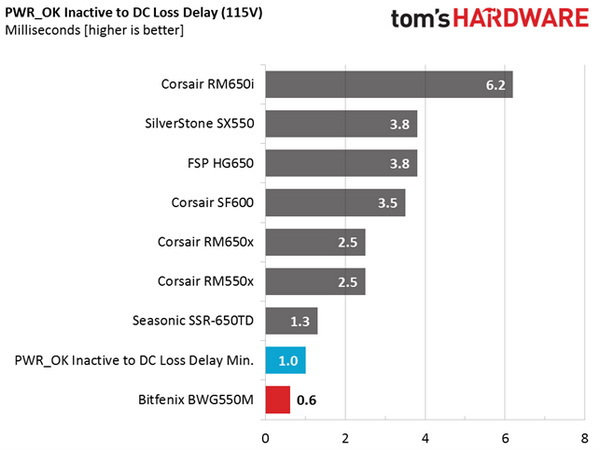
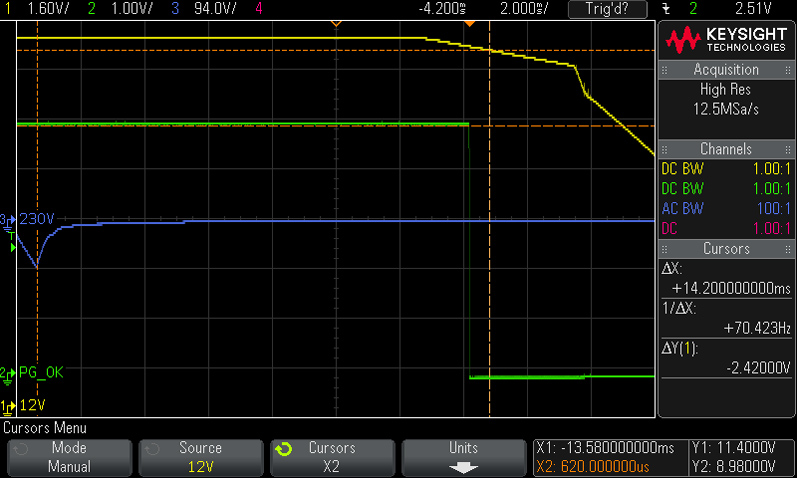
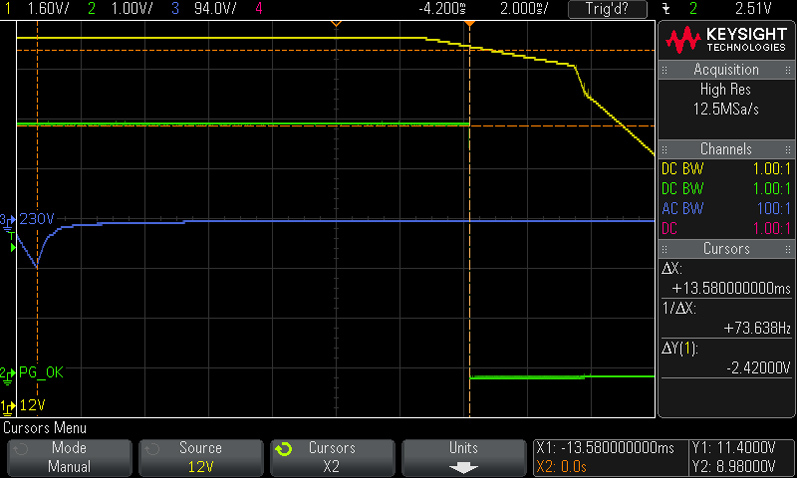
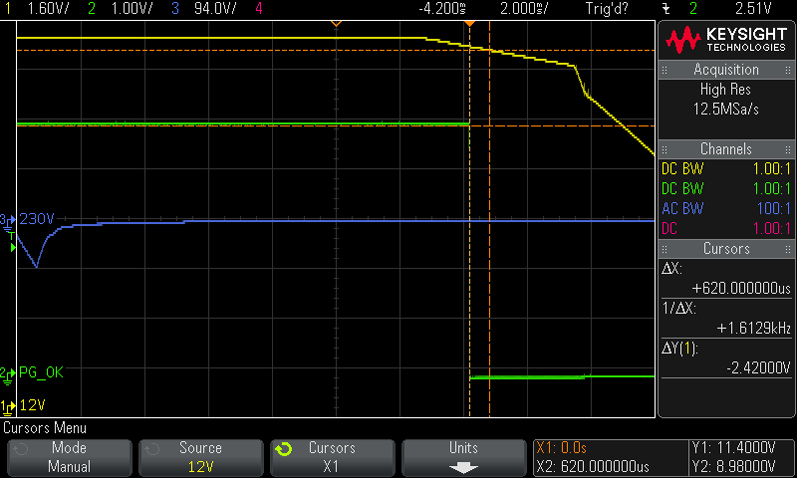
As expected, the hold-up time we measured is lower than 17ms. Thankfully the power-good signal is accurate, and it doesn't last longer than the unit's actual hold-up time.
The difference between the hold-up time and the moment the power-good signal is deasserted should be at least 1ms. As you can see, in this case it's only 0.62ms.
Inrush Current
For details on our inrush current testing, please click here.
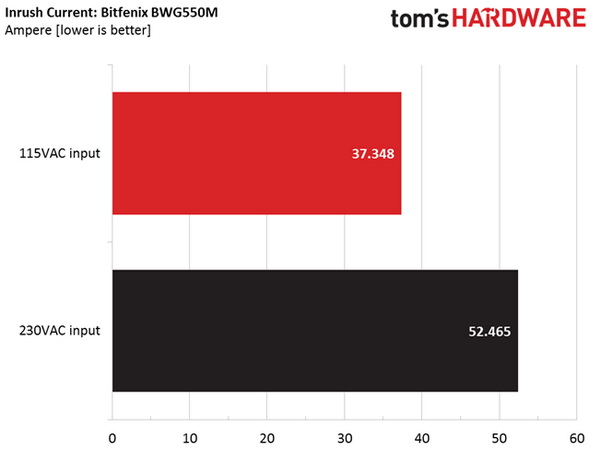
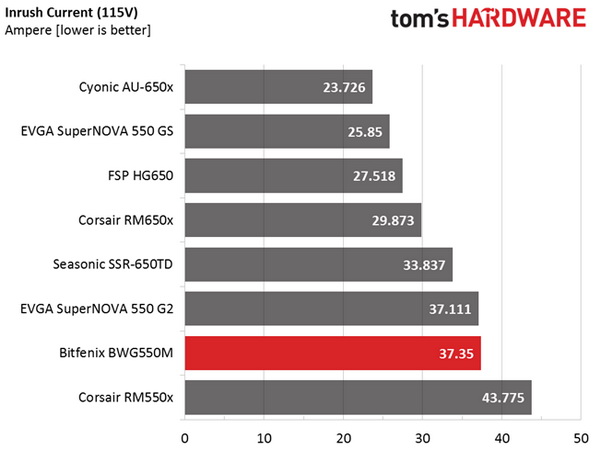
The inrush current with both 115V and 230V is a little higher than the average in this wattage category. An NTC thermistor with increased resistance should be used instead of the only that's installed.
Get Tom's Hardware's best news and in-depth reviews, straight to your inbox.
Load Regulation And Efficiency Measurements
The first set of tests reveals the stability of the voltage rails and the PSU's efficiency. The applied load equals (approximately) 10 to 110 percent of the maximum load the supply can handle, in increments of 10 percentage points.
We conducted two additional tests. During the first, we stressed the two minor rails (5V and 3.3V) with a high load, while the load at +12V was only 0.1A. This test reveals whether a PSU is Haswell-ready or not. In the second test, we determined the maximum load the +12V rail could handle with minimal load on the minor rails.
| Test # | 12V | 5V | 3.3V | 5VSB | DC/AC (Watts) | Efficiency | Fan Speed | Fan Noise | Temps (In/Out) | PF/AC Volts |
|---|---|---|---|---|---|---|---|---|---|---|
| 1 | 2.753A | 1.973A | 1.975A | 0.985A | 54.75 | 85.96% | 400 RPM | 21.3 dB(A) | 38.16°C | 0.944 |
| 12.054V | 5.058V | 3.338V | 5.070V | 63.69 | 40.99°C | 115.1V | ||||
| 2 | 6.552A | 2.960A | 2.967A | 1.182A | 109.74 | 89.76% | 400 RPM | 21.3 dB(A) | 39.16°C | 0.974 |
| 12.043V | 5.052V | 3.334V | 5.064V | 122.26 | 42.58°C | 115.1V | ||||
| 3 | 10.702A | 3.465A | 3.482A | 1.380A | 164.83 | 90.90% | 400 RPM | 21.3 dB(A) | 40.14°C | 0.982 |
| 12.032V | 5.047V | 3.329V | 5.059V | 181.34 | 44.13°C | 115.1V | ||||
| 4 | 14.857A | 3.962A | 3.968A | 1.580A | 219.76 | 91.22% | 400 RPM | 21.3 dB(A) | 41.00°C | 0.985 |
| 12.022V | 5.042V | 3.323V | 5.054V | 240.92 | 45.84°C | 115.1V | ||||
| 5 | 18.670A | 4.967A | 4.969A | 1.781A | 274.74 | 91.00% | 400 RPM | 21.3 dB(A) | 41.60°C | 0.986 |
| 12.011V | 5.036V | 3.319V | 5.047V | 301.91 | 47.51°C | 115.1V | ||||
| 6 | 22.493A | 5.961A | 5.972A | 1.980A | 329.68 | 90.18% | 400 RPM | 21.3 dB(A) | 42.91°C | 0.987 |
| 12.000V | 5.031V | 3.314V | 5.040V | 365.59 | 50.75°C | 115.1V | ||||
| 7 | 26.322A | 6.968A | 6.979A | 2.182A | 384.67 | 89.64% | 650 RPM | 26.5 dB(A) | 43.19°C | 0.986 |
| 11.989V | 5.025V | 3.309V | 5.034V | 429.15 | 51.41°C | 115.1V | ||||
| 8 | 30.161A | 7.969A | 7.990A | 2.385A | 439.62 | 89.04% | 830 RPM | 31.6 dB(A) | 44.10°C | 0.985 |
| 11.977V | 5.019V | 3.303V | 5.027V | 493.75 | 52.97°C | 115.1V | ||||
| 9 | 34.439A | 8.476A | 8.518A | 2.385A | 494.69 | 88.45% | 1260 RPM | 41.0 dB(A) | 45.28°C | 0.986 |
| 11.966V | 5.015V | 3.299V | 5.025V | 559.29 | 54.80°C | 115.1V | ||||
| 10 | 38.676A | 8.987A | 9.016A | 2.488A | 549.54 | 87.90% | 1400 RPM | 42.7 dB(A) | 45.94°C | 0.987 |
| 11.954V | 5.009V | 3.294V | 5.020V | 625.18 | 53.35°C | 115.1V | ||||
| 11 | 43.323A | 8.996A | 9.022A | 2.489A | 604.57 | 87.00% | 1400 RPM | 42.7 dB(A) | 45.99°C | 0.988 |
| 11.942V | 5.005V | 3.291V | 5.018V | 694.89 | 54.19°C | 115.1V | ||||
| CL1 | 0.100A | 12.010A | 12.005A | 0.003A | 101.51 | 84.47% | 400 RPM | 21.3 dB(A) | 43.07°C | 0.974 |
| 12.037V | 5.033V | 3.319V | 5.090V | 120.18 | 52.80°C | 115.1V | ||||
| CL2 | 45.784A | 1.002A | 1.003A | 1.002A | 560.96 | 88.35% | 1400 RPM | 42.7 dB(A) | 44.47°C | 0.987 |
| 11.959V | 5.029V | 3.312V | 5.058V | 634.91 | 51.75°C | 115.1V |
Load regulation is fairly tight on all rails, and the PSU easily meets the 80 PLUS Gold requirements, even under high ambient temperatures.
Output noise remains low thanks to a conservative fan profile and low-speed fan. We have to push the PSU hard in order to make the fan spin higher than 1000 RPM. The transition to higher speeds could be smoother, since the difference between the 80% and 90% load tests is huge.
In any case, the PSU performs well. It doesn't seem to have any problem running in unforgiving environments as it delivers full load for prolonged periods.
Current page: Load Regulation, Hold-Up Time, And Inrush Current
Prev Page A Look Inside And Component Analysis Next Page Efficiency, Temperature, And Noise
Aris Mpitziopoulos is a contributing editor at Tom's Hardware, covering PSUs.
-
Aris_Mp Indeed, its performance was a nice surprise for me as well. It's good to see some new competition in this market.Reply -
Nuckles_56 Damn, I wonder what Australian pricing will be like for this unit, as I'd be almost tempted to replace my current PSU with a quieter one like this if it is priced wellReply -
Aris_Mp Reply19083753 said:Hi, please give me quick advice: Bitfenix Whisper M 550W or Corsair RM550x ?
Which ever you can find at a lower price. Performance wise they are very close.
-
jonnyguru One noticeable difference between the RMx and the Whisper is that the RMx uses an MCU for the fan controller instead of the standard thermistor/transistor circuit in the BitFenix product.Reply
